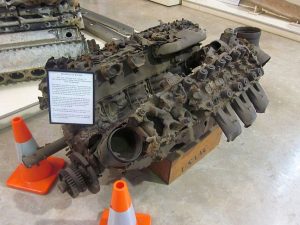MUSEUM
Darwin Aviation Museum
DESCRIPTION
Curtiss-Wright P-40E Warhawk tail number 189 (Wreckage – tail plane)
General characteristics:
Length: 9.66m (31.67ft)
Wingspan: 11.38m (37.33ft)
Height: 3.76m (12.33ft)
Empty weight: 2,880kg (6,350lb)
Loaded weight: 3,760kg (8,280lb)
Max. Take-off weight: 4,000kg (8,810lb)
Powerplant: One Allison V-1710-39 liquid-cooled V12 engine 1,150hp (858kW)
Performance:
Maximum speed: 580km/h (360mph)
Cruise speed: 435km/h (270 mph)
Range: 1,100km (650 miles)
Service ceiling: 8,800m (29,000ft)
Rate of climb: 11m/s (2,100 ft/min)
Armament:
Guns: 6 × .50in M2 Browning machine guns with 150-200 rounds/gun
Bombs: 250 to 1,000lb (110 to 450kg) bombs to a total of 2,000lb (907kg) on three hardpoints (one under the fuselage and two underwing)
HISTORY – (PROVENANCE)
The tail plane assembly on display belonged to the P-40E aircraft of Second Lieutenant Jack Richard Peres of the 33rd Pursuit Squadron (Provisional) of the 33rd Pursuit Group USAAF. Lt Peres is thought to be the first Allied airman to die during the initial Japanese raid on Australia on 19 February 1942. He was shot down north of Darwin near Gunn Point. The wreckage of his P-40 (serial number 41-5368) and his remains were found in September 1942. His remains were interred at Adelaide River War Cemetery and were taken back to the US after the war.
Peres came from Glendale, California and joined the United States Army Air Corps on 31 December 1940, graduating as a pilot from the USAAC’s Advanced Flying School at Kelly Field on 15 August 1941. He was called to Active Duty the following day and over the next fourteen months was assigned to the 21st and 35th Pursuit Groups before leaving for Australia on 20 November 1941 and service with the US Army Far East Air Force.
The tail number ‘189’ is still faintly visible on the port side of the displayed tail. Lieutenant Peres was posthumously awarded the American Distinguished Service Cross “for extraordinary heroism in action near Darwin, Northern Territory, Australia on February 19, 1942.”
The following are reports about Peres on his role in the combat with the Japanese raiders and his subsequent crash on 19 February 1942:
“I thought Peres had engine trouble and was heading back to the airfield… I tried to catch up… to fill the gap left by Peres. Suddenly below me and to the right I saw Peres being followed… as I turned I saw the Japanese fire his cannon. I saw shells hitting Peres, and then his plane slowly rolled over and down.”
Lieutenant Max Wiecks, 33rd Pursuit Squadron USAAF interviewed by Douglas Lockwood in Australia’s Pearl Harbour: Darwin 1942 first published 1966.
“Personnel to Gunn Point re Crashed Aircraft, located 8am. Investigation revealed that a American Kittyhawk No189 piloted by Lt. Peres crashed and burnt up on 19th Feb, 1942, On 15th September Capt. Powell (American) and rescue party salvaged burnt remains of the pilot.”
Police Journal report following the finding of Lieutenant Peres’ aircraft by Koolpinyah station hands.
“Capt Powell (our) old G-10 came by and said he would meet (Captain) Sims…up East of Darwin where they had found the wreck of a P-40 and a skeleton. He came back later…with the remains of a Bulova watch in pretty good shape. It had the name “Jack Peres” engraved on the back. Dock staffer said he was here in that Feb19 raid and… probably shot down then.”
Diary of Lt Clyde Barnett, 49th Fighter Group USAAF, 7 September 1942



